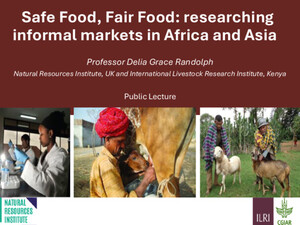
Non-typhoidal Salmonella among slaughterhouse workers and in the pork value chain in selected districts of Uganda
Abstract
Introduction: Non-typhoidal Salmonella (NTS) is a major cause of gastroenteritis worldwide, often associated with meat consumption and meat processing. Research on NTS infection and circulating serovars in meat value chains in Uganda is limited. We aimed to establish NTS prevalence, antimicrobial resistance, and risk factors among slaughterhouse workers, and to identify potentially zoonotic serovars in the pork value chain.
Material and methods: We conducted a nationwide cross-sectional survey, collecting 364 stool samples from livestock slaughterhouse workers and 1,535 samples from the pork value chain: mesenteric lymph nodes, fecal samples, swabs of carcass splitting floor, cleaning water, meat handlers hand swabs, carcass swabs, raw pork, cooked pork, and mixed raw vegetables. Samples were cultured for isolation of NTS, and subsequently serotyped according to White–Kauffmann–Le Minor scheme. Antimicrobial resistance profiles were determined using tube microdilution and Sensititre® EUVSEC3® plates. Semi- structured questionnaires with 35 questions were used to collect data on demographics, work related risk factors and activities outside the slaughterhouse.
Results and discussion: Overall NTS prevalence was 19.2% (365/1899). Proportions at slaughter were; 46.7% in floor swabs, 30.5% in carcass swabs, 20.5% in pig faeces,19.2% in mesenteric lymph nodes,18.4% in hand swabs, 9.5% in water and 5.2% in slaughterhouse workers. At retail, proportions were 33.8% in pork chopping surface, 33.1% in raw pork, 18.9% in hand swabs, 4.0% in cooked pork and 0.7% in vegetables. Sixty-one serovars were identified, with significant overlap between humans and the pork value chain. Overall, zoonotic S. Zanzibar, monophasic serovars of S. subspecies salamae (II) and subspecies enterica (I), S. Typhimurium and S. Newport, were the most prevalent. S. Typhimurium was predominant in humans and exhibited multi-drug resistance. NTS infection was significantly associated with eating, drinking, or smoking while working (OR = 1.95, 95% CI: 0.67-2.90%, p = 0.004). The detected NTS serovars in slaughterhouse workers could be a potential indicator of circulating serovars in the general population. The persistent presence of NTS along the pork value chain highlights occurrence of cross-contamination and the potential for transmission to consumers and slaughterhouse workers. This emphasizes the need to reduce Salmonella prevalence on pig farms and improve hygiene and pork handling practices at slaughter and retail points.
Citation
Kivali, V., Roesel, K., Dohoo, I., Alinaitwe, L., Bugeza, J.K., Hoona, J.J., Mugizi, D.R., Kankya, C., Sinh Dang-Xuan, Szabo, I., Rösler, U., Friese, A. and Cook, E.A.J. 2024. Non-typhoidal <i>Salmonella</i> among slaughterhouse workers and in the pork value chain in selected districts of Uganda. Frontiers in Veterinary Science 11: 1427773.









